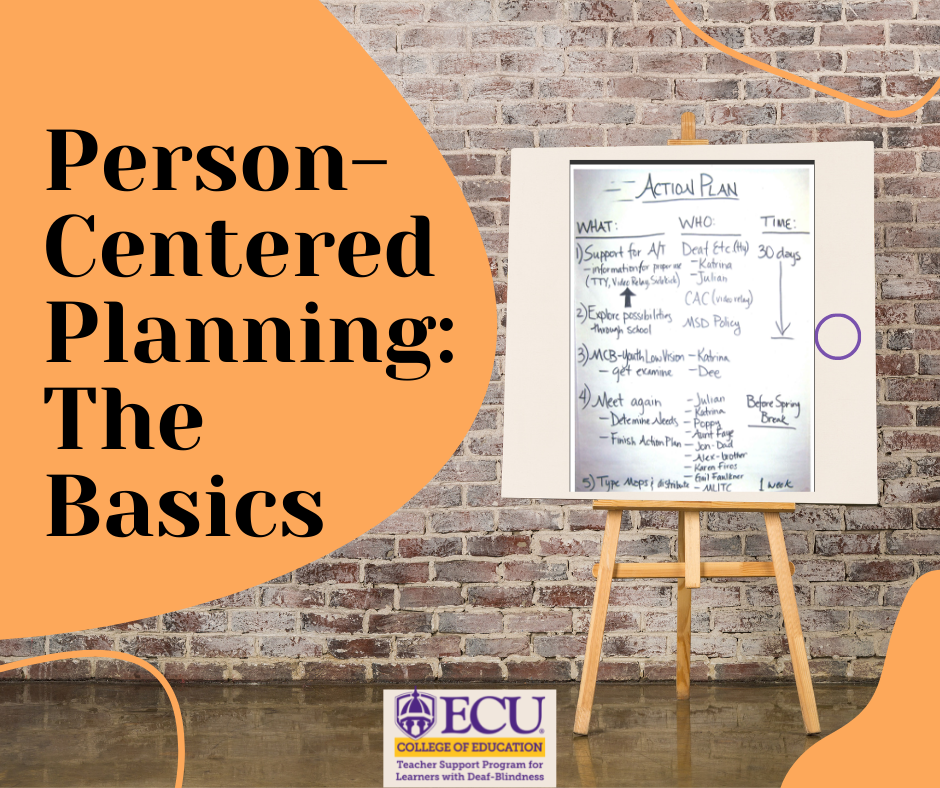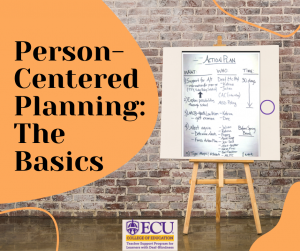So you may have heard about person-centered planning but you’re not sure of the details. Well, we’ve provided our own question and answer session to help you understand!
What is Person-Centered Planning?
A valuable tool that can be used in a variety of ways to assist in meaningful educational and life planning using a holistic approach for learners of all ages.
What’s the purpose of Person-Centered Planning?
- It determines the plan of action for enabling the individual to live to their fullest potential.
- It is an effective method in guiding the individual to be an advocate for the direction of their life.
- The team works together to develop an action plan to turn dreams into reality.
Who is involved in Person-Centered Planning?
The learner and his/her family take the lead in organizing a person-centered plan assisted by school and/or agency personnel familiar with the process. It is important that the family play a crucial role in determining who participates in the meeting.
Where does the meeting take place?
Sessions will take place at a mutually agreed-upon location, such as a classroom (after school hours), community or church meeting space, etc.
How long will the meeting last?
The PCP session is typically two to three hours in length with a break provided. Each session varies depending on the individual’s plan.
Do I need to bring anything to the meeting?
The parents and other participants do not need to bring anything to the meeting unless there are items specific to your child that you may need during the session.
Should my child be in attendance at the meeting?
Yes, your child should be in attendance and encouraged to take a proactive role during the person-centered planning process.
How are PCP sessions organized?
During in-person PCP sessions, the room is set up so the facilitator is in the middle, the chart stand and note-taker are near the facilitator, and team members are seated in a semi-circle facing the facilitator and chart. This arrangement encourages input from everyone.
What are MAPS?
A series of graphic charts that when taken together provide a personal picture of the learner that goes beyond the typical reports and assessments to yield valuable information.
How will the plan be implemented?
- The initial core group team members will monitor progress and coordinate action steps.
- As the process moves forward, the team may include new or fewer members.
- The PCP can be updated or certain maps revised.
- Plans should be reviewed at key transition points or significant life events.
During what period of life should the Person-Centered Planning take place?
- The PCP session can occur at any time in an individual’s life.
- It is especially helpful to complete prior to times of transition in a person’s life, such as preschool to school age, elementary to middle school, middle to high school, or high school to post-graduation, etc.
- The information provided as a result of the person-centered plan can be an effective tool in helping to create the transition plan.
With many meetings and collaborations going virtual, we must consider the virtual component. Therefore, we’ve created a virtual version of the planning process. Check out our Q & A session below to answer some of your possible questions!
What does a virtual PCP meeting look like?
- A facilitator will conduct the meeting and engage the team in providing ideas and information that will become a person-centered plan for the individual.
- During the session, the information provided for each map will be documented by a recorder.
- At the conclusion of the meeting, an action plan will be developed in order to help achieve life and educational goals.
Before the Meeting:
- Download the virtual platform ahead of the meeting and practice logging into the site.
- Test the technology (audio/video).
- Arrive early on the meeting site (Zoom, WebEx, or Google Meet).
- Use a good microphone or headset.
- Use a quiet room (minimal background sounds).
- Use background free of distractions.
- Have good lighting.
- Using a laptop is preferred. If you must phone in, be sure to have a stable internet connection.
- Charge computer battery to be prepared for the two-three hour meeting.
During the Meeting:
- Mute microphone unless speaking.
- Leave video camera on.
- Use chatbox for asking questions during meetings.
- Use the “raise your hand” feature on the virtual meeting platform to notify the facilitator that you would like to speak.
- Before speaking, please identify yourself.
The Person-Centered Planning process is such a valuable process for the educational and transition planning for students with deafblindness. Please share with us if you’ve participated in a PCP session. We’d love to hear your feedback!
Julie Brickhouse, M.Ed.,NBCT, East Carolina University DeafBlind Project Teacher Support Program, Technical Assistance Consultant


